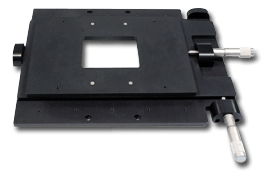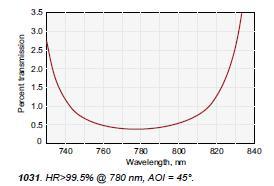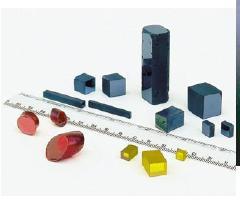pi_mogo_40/65s 精密电动角度位移台系统
2008-08-14 12:19
浏览:815次
分享:资料摘要:
电动位移台
型号: KTM40,LTM45等
产地:
品牌: OWIS
面议
参考报价
下载本篇资料:
相关资料
湍流本质上具有三维(3D)立体结构属性。普通的二维(2D)包 括采用激光照明的成像测量无法在所有三个空间维度上分辨湍流 的结构。而利用多视角成像信息,采用层析重构技术则可以在三 个空间维度上同时捕捉记录复杂流动的瞬态结构。应用针对体像 素的三维(3D)相关处理技术,可以由时间相关的体成像数据计 算出瞬态三维空间的流场。 LaVision功能强大的,基于层析粒子成像测速(Tomo-PIV)和层 析粒子跟踪测速(Tomo-PTV)技术的FlowMaster激光成像系统, 能够以极高的空间分辨率记录强湍流,火焰以及喷雾对象的瞬态 体视流场。
Two-dimensional velocity fields around a freely swimming freshwater black shark fish in longitudinal (XZ) plane and transverse (YZ) plane are measured using digital particle image velocimetry (DPIV). By transferring momentum to the fluid, fishes generate thrust. Thrust is generated not only by its caudal fin, but also using pectoral and anal fins, the contribution of which depends on the fish’s morphology and swimming movements. These fins also act as roll and pitch stabilizers for the swimming fish. In this paper, studies are performed on the flow induced by fins of freely swimming undulatory carangiform swimming fish (freshwater black shark, L = 26 cm) by an experimental hydrodynamic approach based on quantitative flow visualization technique. We used 2D PIV to visualize water flow pattern in the wake of the caudal, pectoral and anal fins of swimming fish at a speed of 0.5–1.5 times of body length per second.
Single-shot, tomographic imaging of the three-dimensional concentration field is demonstrated in a turbulent gaseous free jet in co-flow using volumetrically illuminated laser-induced fluorescence. The fourthharmonic output of an Nd:YAG laser at 266 nm is formed into a collimated 15 × 20 mm2 beam to excite the ground singlet state of acetone seeded into the central jet. Subsequent fluorescence is collected along eight lines of sight for tomographic reconstruction using a combination of stereoscopes optically coupled to four two-stage intensified CMOS cameras. The performance of the imaging system is evaluated and shown to be sufficient for recording instantaneous three-dimensional features with high signal-tonoise (130:1) and nominal spatial resolution of 0.6–1.5 mm at x/D = 7–15.5.
Many marine organisms have complex life histories, having sessile adults and relying on the planktonic larvae for dispersal. Larvae swim and disperse in a complex fluid environment and the effect of ambient flow on larval behavior could in turn impact their survival and transport. However, to date, most studies on larvae–flow interactions have focused on competent larvae near settlement. We examined the importance of flow on early larval stages by studying how local flow and ontogeny influence swimming behavior in pre-competent larval sea urchins, Arbacia punctulata. We exposed larval urchins to grid-stirred turbulence and recorded their behavior at two stages (4- and 6-armed plutei) in three turbulence regimes. Using particle image velocimetry to quantify and subtract local flow, we tested the hypothesis that larvae respond to turbulence by increasing swimming speed, and that the increase varies with ontogeny.









